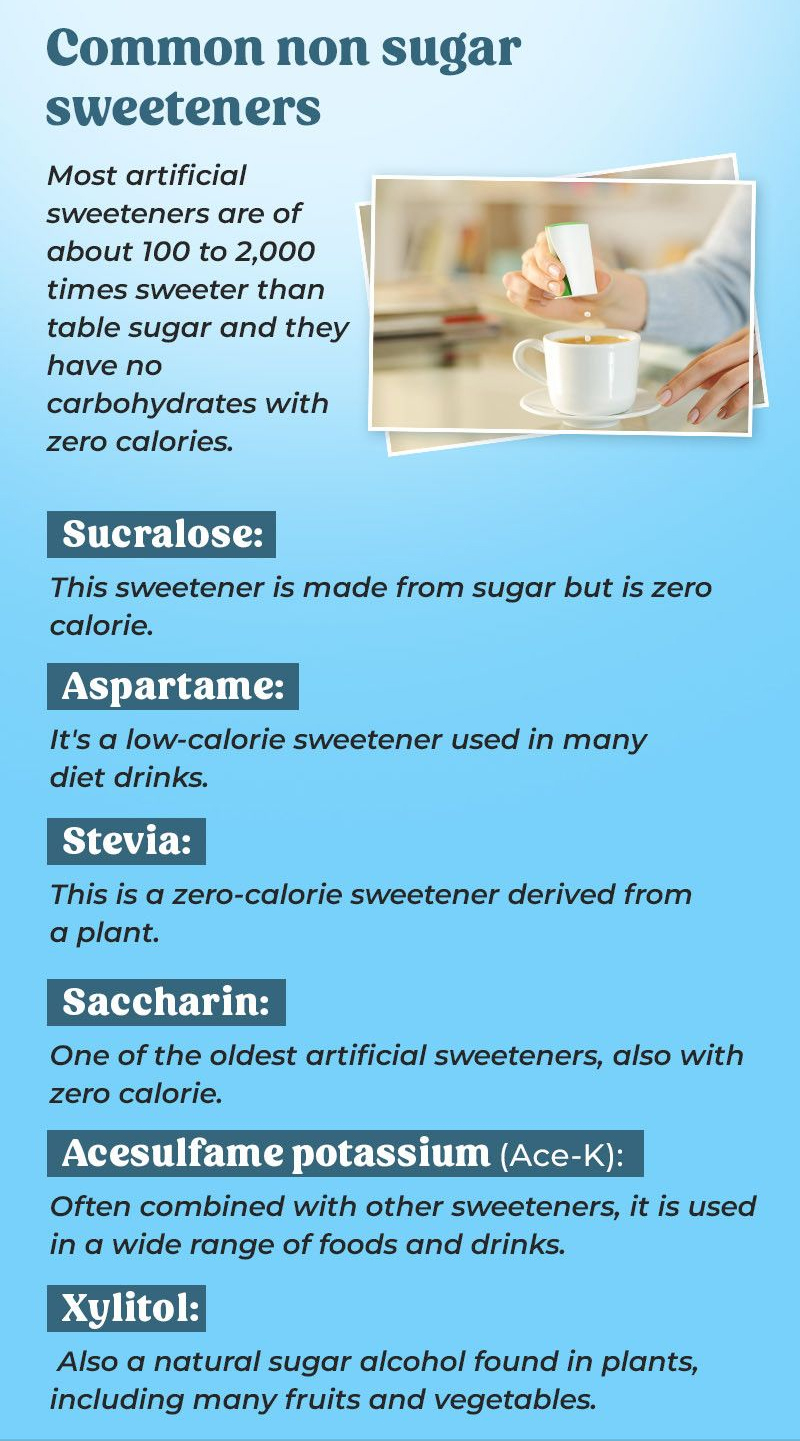- Home
- Prelims
- Mains
- Current Affairs
- Study Materials
- Test Series
Know About Aspartame
 The cancer research armof the World Health Organisation (WHO) will list the popular sugar substitute aspartame as “possibly carcinogenic to humans”. The listing by the International Agency for Research on Cancer (IARC) is likely next month, the Reuters report said, quoting unnamed sources.
The cancer research armof the World Health Organisation (WHO) will list the popular sugar substitute aspartame as “possibly carcinogenic to humans”. The listing by the International Agency for Research on Cancer (IARC) is likely next month, the Reuters report said, quoting unnamed sources.
- Aspartame is one of the world’s most common artificial sweeteners and is used in a wide range of diet soft drinks, sugar-free chewing gum, sugar-free ice-cream, sugar-free breakfast cereals, etc.
- A number of studies have repeatedly said that aspartame does not pose a risk for cancer.The listing by WHO, if it comes, will break from those earlier findings, “pitting it against the food industry and regulators”, the Reuters report said.
What is this assessment by the WHO?
- Two different WHO groups — IARCand the Joint Organization Expert Committee on Food Additives, or JECFA — are currently reviewing the safety of aspartame.
- The IARC concluded a meeting in France last week, and JECFA was scheduled to meet from 27 June to 6 July 2023 to update its risk assessment of aspartame, including reviewing how much can be safely consumed, The Washington Post reported.
- The result of both evaluations would be announced, The Post’s report said, and noted that “many in the nutrition world [were] predicting the WHO will convey new concerns about the sweetener”.
- It said that the IARC assessment “does not take into account how much of a product a person can safely consume”, and that “this advice for individuals comes from…[the] JECFA, alongside determinations from national regulators”.
And what exactly is aspartame?
- Chemically, aspartameis a methyl ester of the dipeptide of two natural amino acids, L-aspartic acid and L-phenylalanine. It was discovered by James M Schlatter, a chemist at the American pharmaceutical company G D Searle & Co. (which is now a subsidiary of Pfizer) in 1965, apparently by accident, when, while researching an anti-ulcer drug, he happened to lick his finger and detected a sweet taste.
- According to the US Food and Drug Administration (FDA), aspartameis about 200 times sweeter than table sugar — which makes aspartame far less sweet than other artificial sweeteners like advantame and neotame, but even then, 1 gram of aspartame has the sweetness intensity of roughly 2 teaspoons (about 8 g) of sugar.
- Aspartameis preferred by people trying to cut calories or lose weight, or by diabetics, because while 2 teaspoons (8 g) of sugar provides about 32 kcals of energy, 1 g of aspartame is only 4 kcals.
- It is often argued that a 12 fl oz (about 350 ml) can of regular colacontains about 10 teaspoonfuls of sugar, while the same quantity of diet cola containing aspartame has only 7 kcals. Indeed, cans/ bottles of diet fizzy drinks often say “zero sugar” or “zero calories” on the packaging.
- Aspartameis present in several brands of artificial sweeteners, the most common of which in India are Equal and Sugar-Free Gold.
So is aspartame dangerous?
- Over more than 40 years, aspartamehas been one of the most widely studied and rigorously tested chemical additives in food, including for its possible links with cancer. More than 100 studies have found no evidence of harm caused by aspartame.
- While doubts and concerns have continued to be raised by some critics and a few studies, there is a broad scientific consensus on the safety of aspartamefor all groups of people except one — those suffering from phenylketonuria (PKU), a rare inherited disorder in which the patient does not have the enzyme that is needed to break down phenylalanine, one of the two amino acids in aspartame. Foods containing aspartame carry the warning “Not for phenylketonurics”.
- The USFDA permitted the use of aspartame in food in 1981, and has reviewed the science of its safety five times since then, The Washington Post report said. Aspartame is also certified as safe for human consumptionby the European Food Safety Authority (EFSA), national regulators in Japan, Australia, New Zealand, and Australia, and even the WHO’s JECFA. Around 100 countries around the world, including India, permit the use of aspartame.
- The Reuters report noted that past IARC rulings have “raised concerns among consumersabout their use, led to lawsuits, and pressured manufacturers to recreate recipes and swap to alternatives”. This, the report said, “has led to criticism that the IARC’s assessments can be confusing to the public.
Foods containing aspartame
Found in more than 5,000 foods and drinks, aspartame is far sweeter than sugar. In 1974, the FDA approved its use as a tabletop sweetener and ingredient in gum, cereals, instant coffee, dairy products and other items. Common foods and drinks with aspartame include:
- Tabletop sweeteners, including NutraSweet, Equal and Sugar Twin.
- Beverages and drink mixes, such as Diet Coke, Coke Zero, Diet Snapple, Fanta Zero, Sprite Zero, Crystal Light and Wyler’s Light.
- Sugar-free gum, including Trident, Extra, Wrigley’s and Mentos gum.
- Gelatin-based products, including sugar-free Jell-O and Royal Gelatin.
- Syrups, including Mrs. Butterworth’s Sugar Free Syrup and Log Cabin Sugar Free Syrup.









 Latest News
Latest News
 General Studies
General Studies